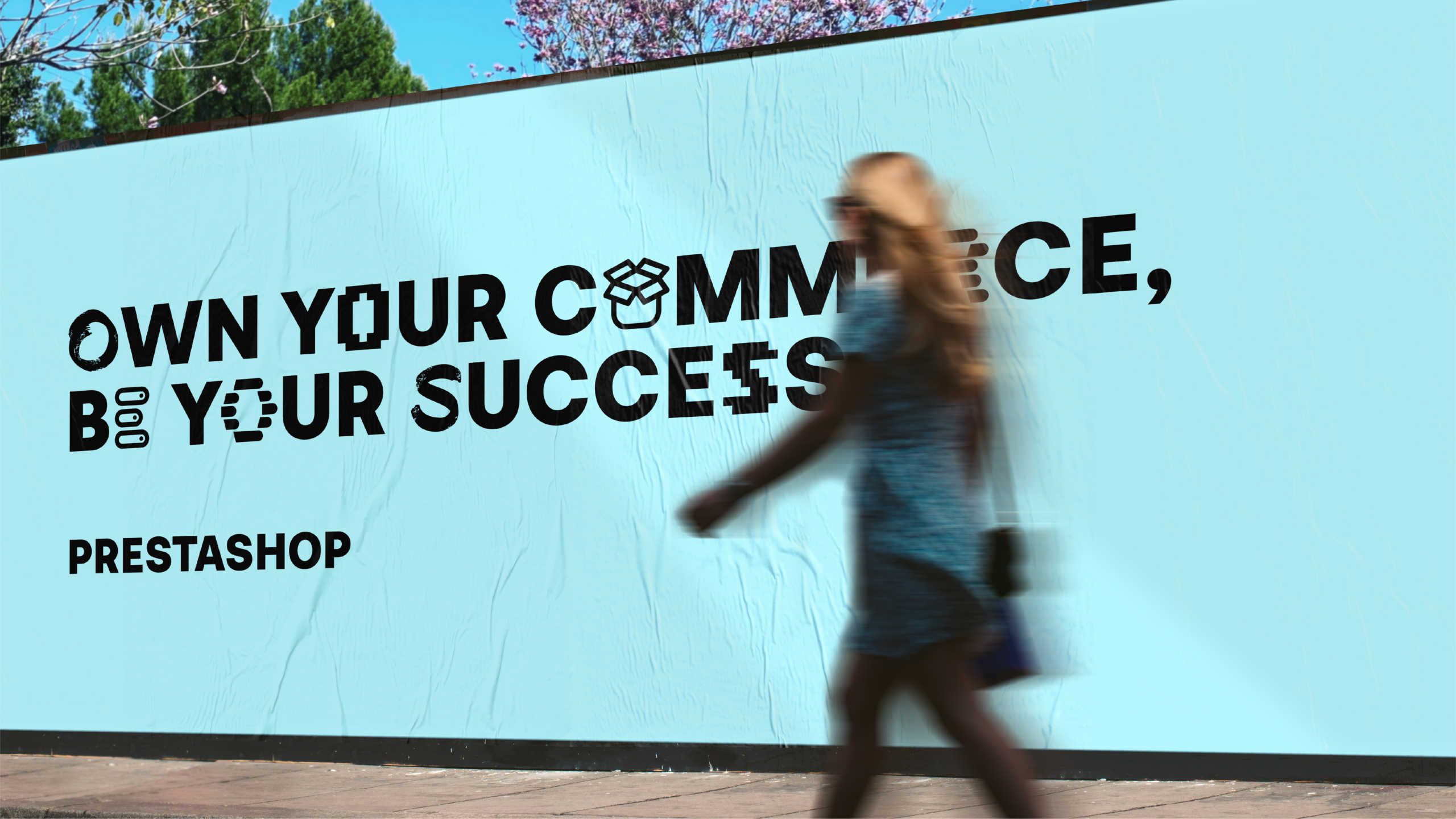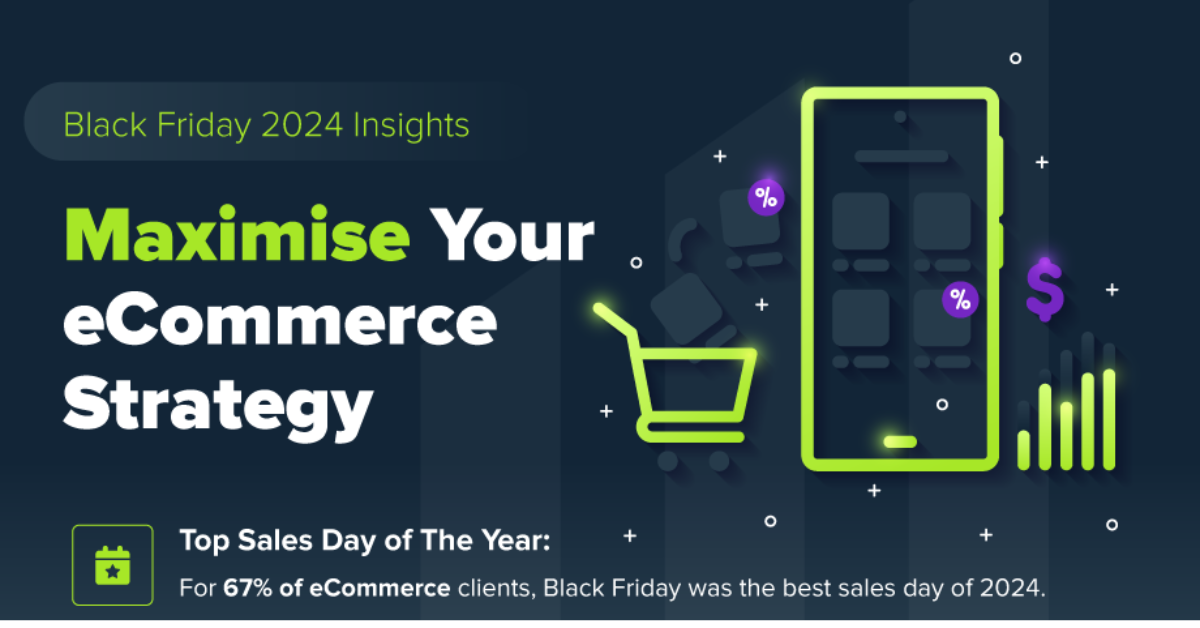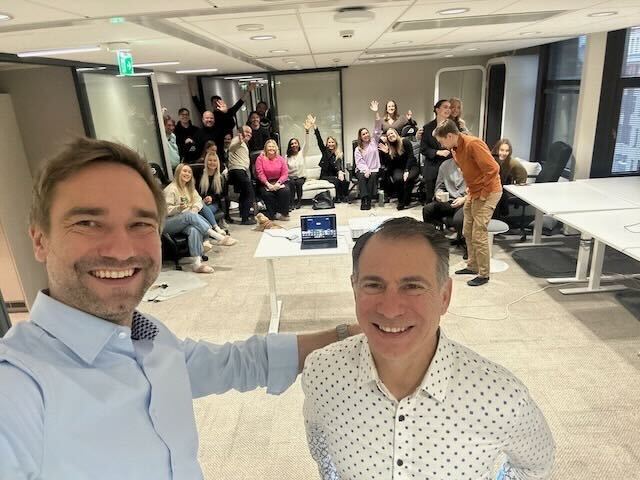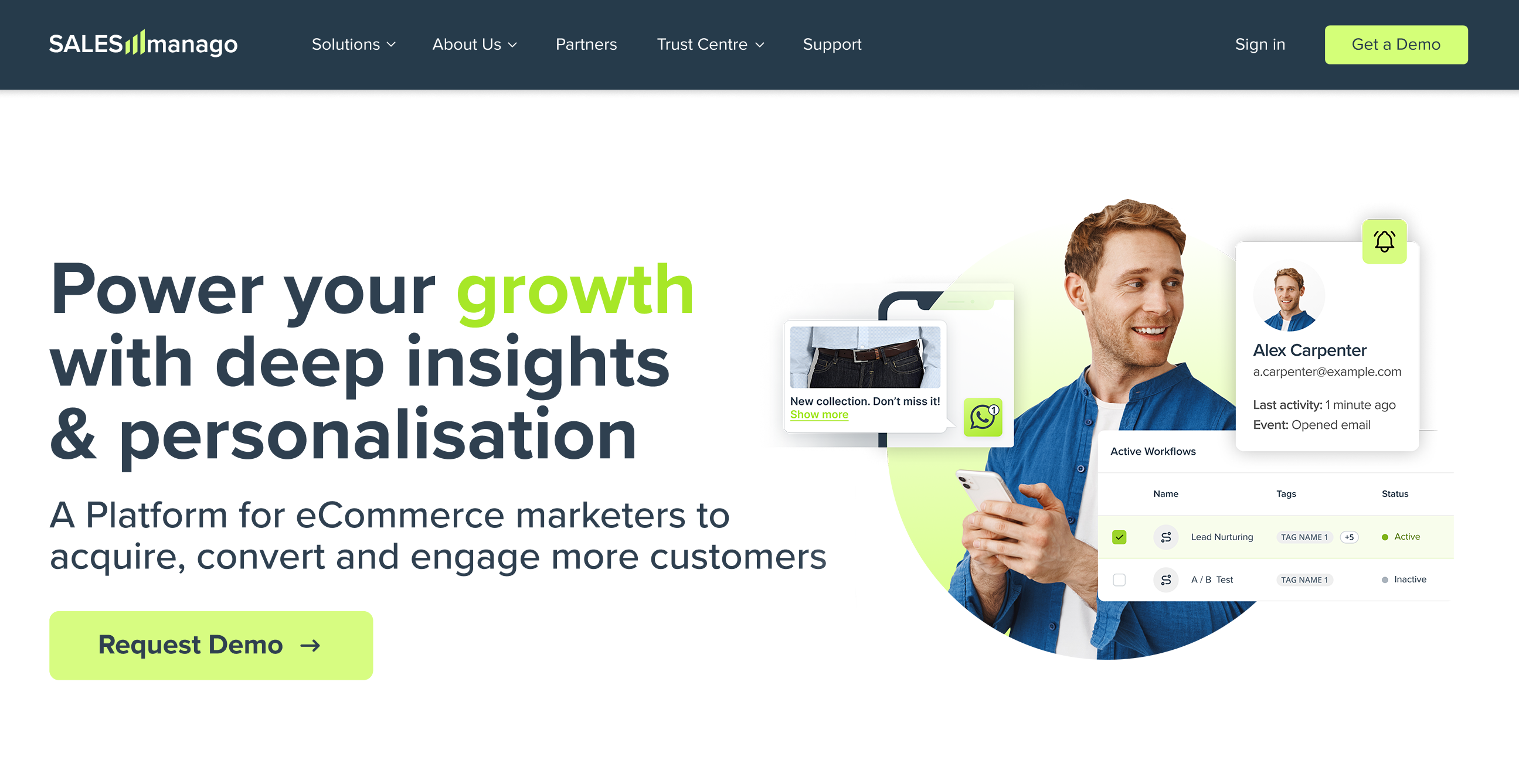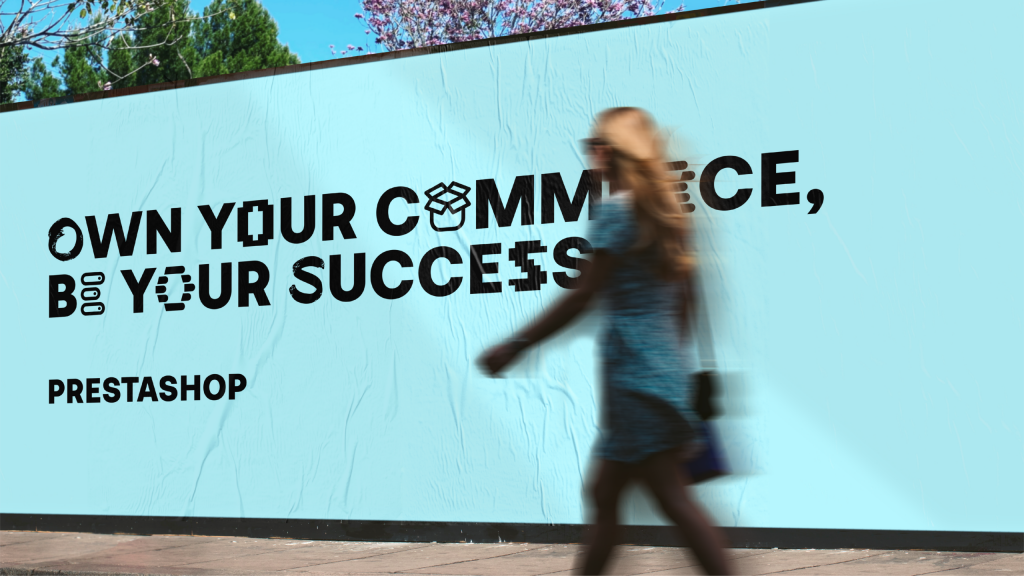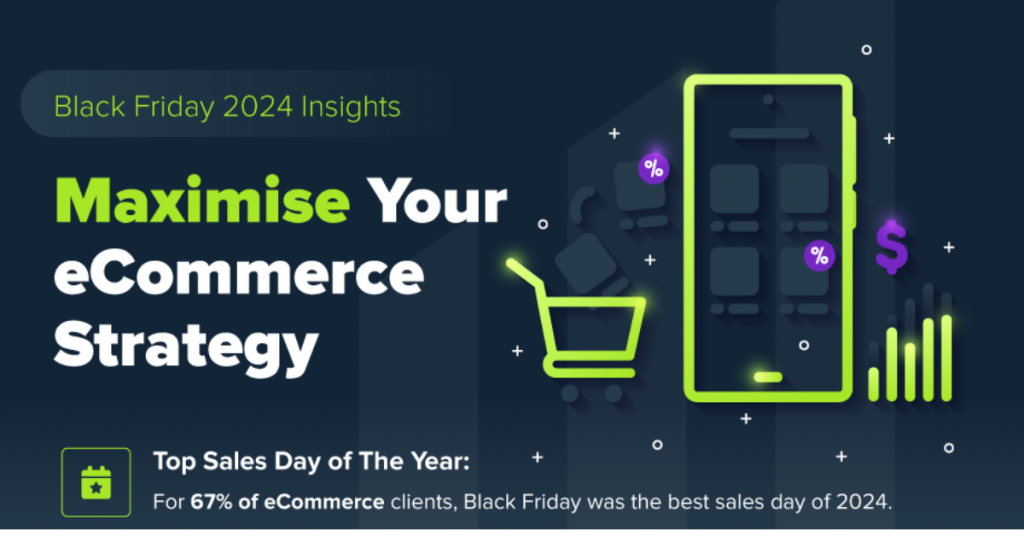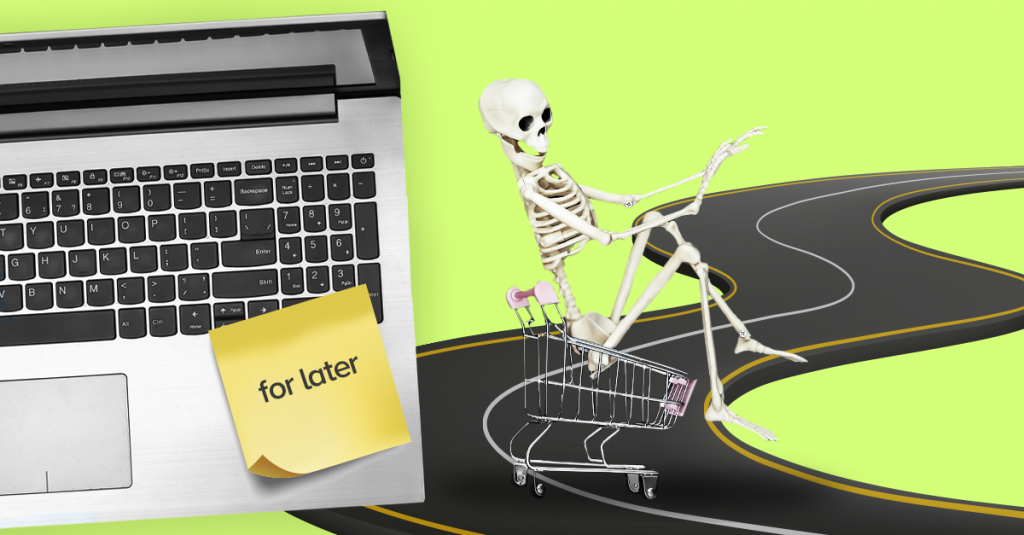
Marek Roleski and Oliviero Toscani. Together they created “Roleski Republic” – an ad about the kingdom of good taste. See it below.
What a wonderful world! No maladies, no poverty, no ugliness, no pain. Sweet babies leave in their diapers only a hygienic blue fluid. The staff of the corporation smiles at us with pearl white teeth. Cheerful bacteria get a ride down the toilet surfing on the wave of lavender freshness.
Create amazing shopping experience. Download Free Ebook
And then someone can’t take it anymore. He can’t understand why do we want our common space to be cluttered with lies that stupefy us while advertising budgets could be spent on provoking discussions on vital issues. In the heart of a rampant consumerism of the 80., he spoils the fun and puts a photo of David Kirby dying from AIDS on a billboard ad. He is criticized by everyone, from conservatives to ad experts, to AIDS activists. But he rides the storm out and never surrenders.
Meet Oliviero Toscani.
The power of dissent
Toscani, a son of the “Corriere della Sera” reporter and student of a prestigious art school in Zurich, knew from the beginning that he would enter the world of advertising by his own rules and wouldn’t compromise.
In his book, “La Pub est une charogne qui nous sourit” (Advertising is a carrion that smiles at us), Toscani listed his accusations against the ad world:
– ads consume a vast amount of money
– ads are useless for society
– ads sell a false picture of the world and false needs
– ads insult consumers’ intelligence, stuffing them with clichés and refraining from issuing thought-provoking campaigns
– ads narrow the meaning of the word “creativity”: people who call themselves “creatives” use patterns and banality because they claim that it works
– ads stoke internal conflicts because they feed fear and prejudices.
Toscani decided to shake foundations of the ad business. And he succeeded.
Myth #1. Avoid Real Life
MYTH: Imagine realistic diaper ad, with screaming baby, nervous mother and a real, non-metaphorical content of the diaper. Image realistic Nutella ad, when mom rushes kids, who are late for school, orange juice spills over someone’s homework, and angry dad tries to remove Nutella fingerprints from the cosmos model made of paper-mache. You won’t see such ads.
Advertising arouses urges recipient doesn’t feel yet and plays on her insecurities. It shows her an unrealistic idyll, in which she is supposed to believe. Her life will improve after purchase. If you buy this shampoo, you will be attractive. If you buy this cereal, you will be a better mother. If you buy these shoes, you will become successful. And so on, and so on.
Advertising fuels the consumption machine, but at the same time it gets more and more formulaic (because each creation sells the same concept – beauty and success) and more homogenic, so it loses its power. Recipients get ad blindness, because no matter what given creation promotes, it says the same: “You lack something.”
TOSCANI: Selling such a simplistic worldview insults your audience’s intelligence and wastes the resources. Instead of shoveling fairytales down your customers’ throats, talk about real life.
Toscani put that philosophy into practice in “Real People” campaign for Esprit (1979). He didn’t want to hire models with perfect, plastic bodies, but set up makeshift studios in several brand’s shops and photographed actual customers in Esprit clothes, asking them also some questions about their opinions and experiences (and getting such brilliant answers as “Making love taught me more than philosophy classes”). It produced an innovative campaign, who gave voice to real customers.
Myth #2. The producer pays for an advertisement
MYTH: When you launch a campaign, you have to pay for it, and you are convinced that it’s your expense. But at the end of the day it has to pay off, so you count it in the price of the product, right?
TOSCANI: It’s customer who pays for the ads – this cost is included in the price of the product she buys. So maybe you should use the money for something more useful for her than mirages of wild dreams put on an enormous billboard that she doesn’t notice?
For Toscani, such observation means a need for admen to offer something more, something that matters, not another cute picture. (that’s also a philosophy behind Marketing Automation).
Myth #3. Your customers are idiots. Don’t make them think!
MYTH: We got used to the mantra “Don’t make them think” so much that we fail to notice that it doesn’t apply to everything in the world. While it’s a good commandment for UX designers, it might hurt if taken literally and enforced in all areas of communication. Or maybe we, the marketers, stopped to think?
Look how marketers’ vocabulary impoverished. We all use the same words: quality, experience, trust, engagement. We replay linguistic and visual clichés. We want our messages to be short and sweet, easy to digest. People don’t read nowadays, we explain, in a professional voice, they don’t like long texts, they have short attention spans, they forgot how to think critically. We must give them something easy! But wait a moment – easy for your audience to consume, or easy for you to produce?
“Stupid consumers” is an excuse we use to justify lack of invention and unwillingness to experiment.
TOSCANI: You tremble with fear that your audience can’t think critically and handle ambivalence (“I like something in it, but this part disgusts me”) or uncertainty (“I don’t know what to think about it”)? Take the risk and try. See how people react to your creation. Ask them how they feel about it. And don’t be so scared of criticism – opponents are vital for discussion.
Toscani loves to provoke and challenge stereotypes. In Benetton campaign, he used a photo of buttock with “HIV positive” stamp. He showed black and white hands cuffed together, so the viewer can’t see who is a cop and who is a villain. He made a collage of passport photos of genitalia.
They’re ambiguous and force the spectator to figure out the meaning on her own. None of them shouts, “Buy a Benetton sweater!” But they were widely discussed. You don’t have to make users buy immediately. These creations made Benetton debated over in the most influential magazines and papers of the world and brought crucial social problems to the light.
(Sweaters were selling well)
PS. You have advanced tools to conduct tests and measure efficiency of each creation. In online marketing, you don’t risk much when experimenting – mostly your habits.
Myth #4. Don’t get into politics
MYTH: “Advertising doesn’t sell products or ideas, but a false and hypnotic model of happiness”, writes Toscani in his book. If you want to, you can follow that rut, producing more dull, irrelevant content.
TOSCANI: Politics doesn’t mean supporting one party. Politics is much more than taxes, fights in parliament or election. It’s rather a strong belief in your ideas and willingness to bring them to public attention. Toscani wanted to combat racism and discrimination or to undertake the problem of AIDS.
What shocked public opinion in his ads? Not the pictures themselves, but the fact that social issues invade the sweet, idyllic ad world. It shows how fiercely admen defend the border between their creations and the brutal reality, how it can’t stand the pain, illness, and danger.
Toscani invited reporters to cooperation. Thanks to him, stunning images started to appear on Benetton’s ads, such as Theresa Frare’s picture of David Kirby dying from AIDS or Patrick Robert’s piece of a black soldier holding a human thigh bone.
Myth #5. Ad must show the product
MYTH: An ad must include as many images of the product as possible, so viewer remembers it by heart. No abstract images, no metaphors, no crazy ideas (don’t force your poor customer to think, right?)
If you promote a washing powder, you show a washing machine, a woman (preferably a mother, we know it’s a harmful stereotype, but our customers are probably conservative, so we should shock them with an idea of a man washing his socks) and snow-white sheets.
TOSCANI: That rule made all ads look the same – we repeat clichés and patterns, leaving no room for creativity, for surprising audience. Toscani always loves to break this rule. See how he involved product images in his recent campaign for Polish company Roleski – they’re aesthetically sublime counterpoint for pictures of gods of good taste.
It won’t work, they said
In a couple of years, United Colors of Benetton became more recognizable than any apparel company. According to the survey from 1994, UCB is more recognizable than Chanel and belongs to 5 the most recognizable brands in the world.
Umberto Eco, a famous Italian writer, analyzed Benetton phenomenon for “Europeo” and claimed that the company skillfully played on ambitions of creatives, writers, and journalists, and exploited their animosities, so they increased the power of campaigns with their endless debates. The critics assigned Benetton ads a role of profound sociological diagnoses. That way Benetton earned a lot of free coverage. It was a masterful trick!
Ad critics don’t agree. Doesn’t Toscani exploit pain and terror of the world to sell cute pullovers? Is he fighting for a better world, or just cynically plays on the sense of guilt we all experience in a capitalist welfare?
For sure he pushed the boundaries and created exceptional work we still admire.
 Follow
Follow


